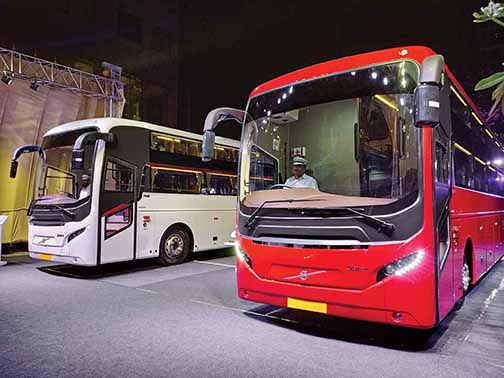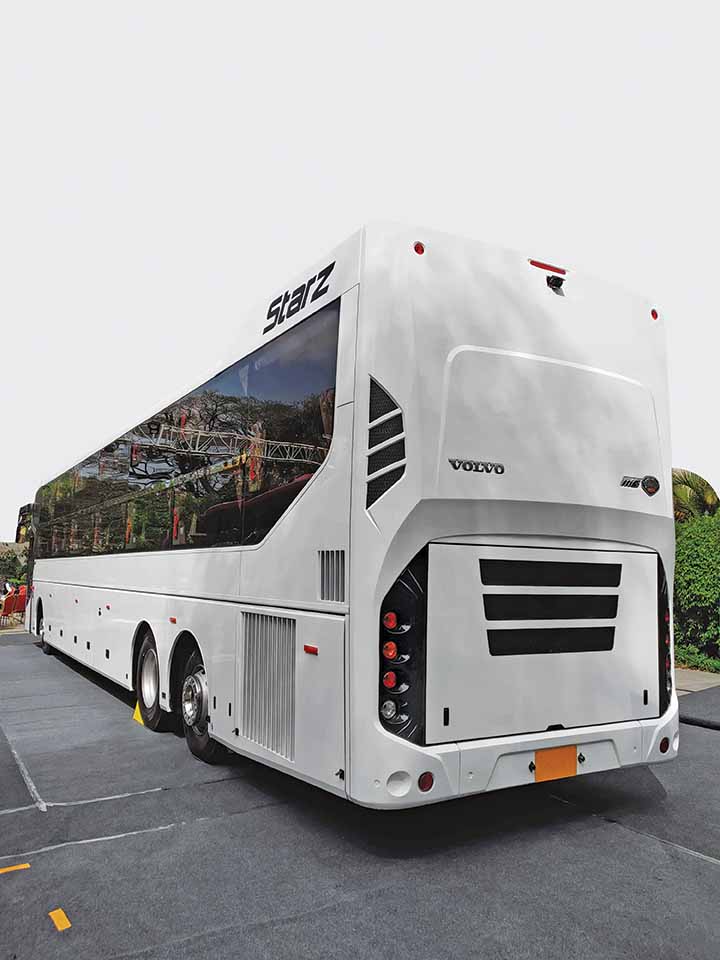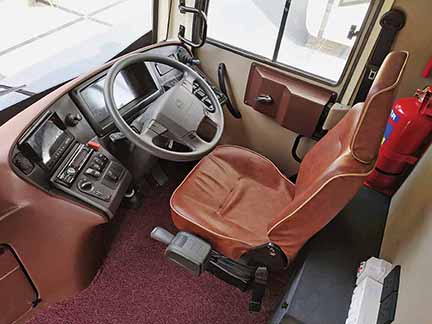Story & Photos by:
Ashish Bhatia
MG Automotives has been in the bus body building business since 1996. It has built bus bodies for almost every OEM in the country, and for numerous private bus operators. Participating in some of the most ambitious bus projects by private and public bus operators like the ‘Shivshahi’ AC bus project by the Maharashtra State Transport Corporation, the company, a part of the Mumbai-based MG Group, has unveiled a new luxury sleeper coach called the Starz. Marking the next level of its journey in coach building, the bus is based on the Volvo B11R. Aimed at the top end of the Indian bus market, estimated to be worth anywhere between 600 to 1000 units a month, the Starz reflects on how far, and how capable the bus body builder has come to be.
With facilities at Belgaum and Zaheerabad, MG Automotives is supported by other MG Group companies like MG Composites, MG Grey Engine, and MG Leather & Trim. If these group companies are supporting MG Automotives in its quest to turnout exciting new products, the Starz is a CIRT Type approved (AIS 119 Rev 1) luxury sleeper coach. It is claimed to be capable of providing the company an ability to carve out a niche for itself at the top end of the Indian bus market. Marking the commissioning of a new coach unit at Belgaum, the Starz, according to Anil Kamat, Managing Director, MG Group is yet another jewel in the crown of the company.
Unveiled on a quiet evening in Bengaluru, the Starz surprisingly does not limit itself in scope to the private side, and even though the first few customers may imply so. It has the potential to woo STUs like the Karnataka State Road Transport Corporation (KSRTC). Available in two lengths – 13.8 m and 14.5 m, the luxury sleeper coach is a clear indication of the change MG Automotives is undergoing, and away from the prying eyes of the outside world. It is perhaps taking into account the rapidly changing world of mobility in India.
The strategy
Conveying the company’s strategy to carve out a place at the top, the distinctive styling of the Starz revolves around the premise of achieving competitive costs in comparison to what an OEM would charge to build one. OEMs like Volvo Buses India have invested a good deal in building bus bodies of their own. With a GVW of 22.2-tonne, the Starz follows close on the heels of the 43-seat ‘Glider’ and the 30-berth ‘Glider-Z’ sleeper coach. These two are built on a 12 m long BharatBenz front-engine chassis, and are also adding to MG Automotives’ efforts to carve out a niche. Also having built a sleeper coach body on the 14.95 m long Mercedes-Benz Super High Deck (SHD) 2441 multi-axle bus chassis called the ‘Dreamz’, the company is eyeing a larger pie of the premium Indian bus market for a reason.
It does not take long to understand this after looking at the Starz that the bus bodybuilder is nurturing an ambition to go global. It has, in fact, built a fair number of buses for exports. A prime example of it would the export of left-hand drive Mammoth buses to Ethiopia in 2016. The first (bus body building) company to offer a type approved multi-axle 15 m premium luxury sleeper coach, according to Kamat, the Starz is claimed to have passed the roll-over test in the first instance. Highlighting an ability to customise at cost-levels that are advantageous in relation to the OEMs, the Starz, said Kamat, incorporates some very unique features like the front removable (boltable) understructure to facilitate serviceability. Standing out of the crowd of multi-axle buses, the luxury sleeper coach features openable wheel flaps to facilitate easy access, according to Girish Prabhu, Head — Product Development & Technology.
The design
Thoroughly modern, the Starz, employs a split glass arrangement. It, according to Prabhu, was done to dial adequate safety provisions. Also adding to the strength of the bus body structure, the split side glass arrangement also underlines the efforts put in by the design team to ease serviceability. The side glasses of the bus are split into two from the top to bottom such that if a glass is damaged the complete set need not be replaced. To support the thin A-pillars in terms of the necessary strength, the design and development team at MG Automotives put in an amount of effort by incorporating restraining bars, according to Prabhu. Walk over to the rear of the bus, and the engine flaps are evident at once. They are removable to prove easy access to the engine compartment. More so in case of a fire. 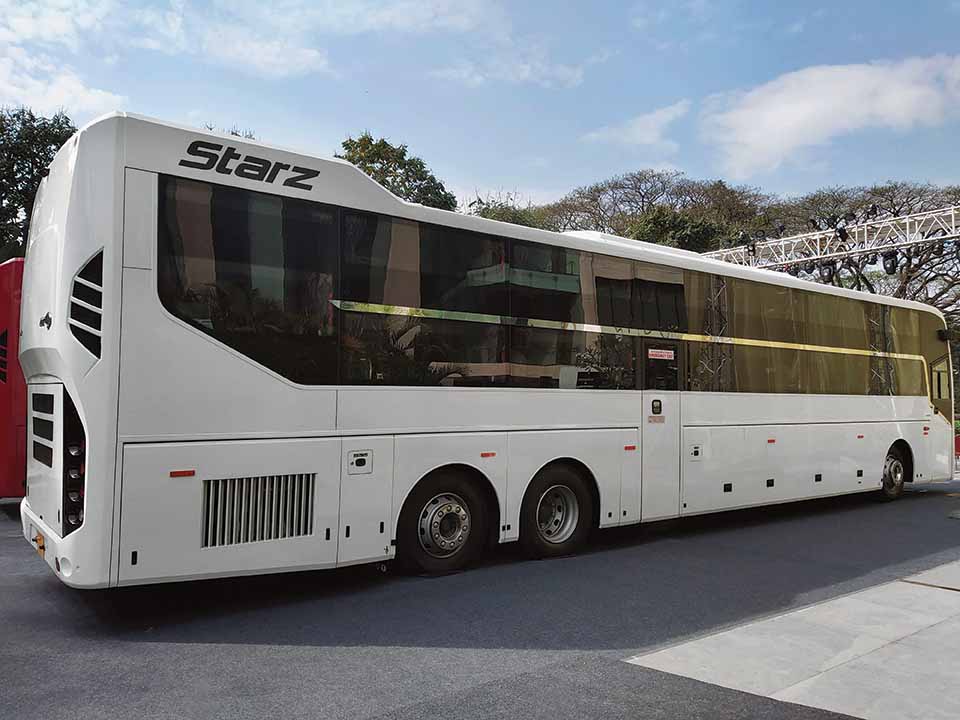
Comfort
Accommodating 40 sleeper berths in a 2×1 layout, the Starz, said Kamat, has been engineered to offer a high level of passenger comfort. Each berth oozes elegance, the way it is expected of a premium coach, he added. From upholstery to in-bus entertainment, the Starz is replete with them. Attention to detail is evident with the inclusion of nick-nacks like magazine holders, bottle holders, AC louvres, reading lamps, plug-points, mobile holders and PU moulded ladders for each berth. The safety of passengers is upheld by the inclusion of a constant surveillance system. The bus thus flaunts CCTV cameras and includes a Public Address (PA) system.
Taking MG Automotive 120 days to build one bus unit, the focus is on imparting a unique identity, according to Kamat. “We decided to keep to the MG design as a constant. Our USP is that no two multi-axle sleeper coaches built by us will look the same. There will always be an amount of exclusivity built in. Each coach will have a unique identity,” he explained.
Climb into the bus, and a well-engineered driver’s area comes into view. It offers a commanding driving position and is ergonomically well-sorted. The view from behind the wheel is panoramic through the near gigantic windshield. The steering is tilt and height adjustable. The modern instrument console features a large speedo, a tachometer, a 6.5-inch LCD display, a fuel gauge and smaller dials for temperature, brake pressure, and turbo and oil pressure. Apart from the various warning lamps, the dash houses a climate control unit, an audio control panel, data logging unit, and a fuel-economy meter. A partition separates the cabin of the Starz. Looking plush, the cabin reflects the exterior design theme. It does a job good of communicating comfort and is visually quite pleasing as well. What makes it interesting is the way the cabin has been insulated from the engine noise at the rear. Except for a distant hum, not much engine noise filters into the passenger cabin. 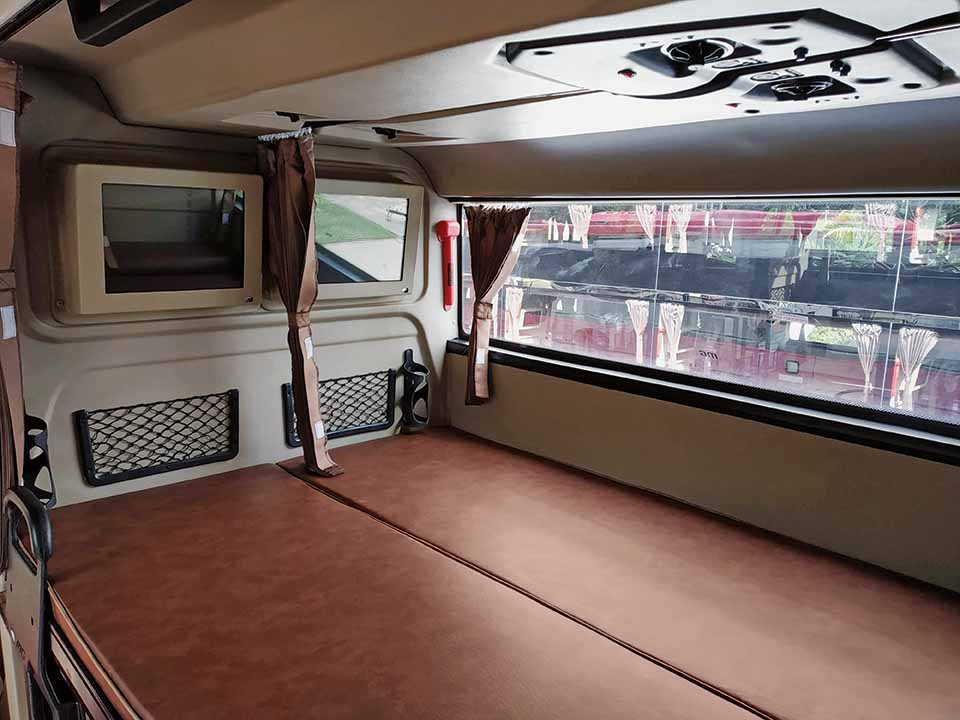
The power
Powering the Starz is a Volvo D11C six-cylinder BSIV engine that produces 370 hp at 1750 rpm. The peak torque the engine produces is 950 Nm at 1400 rpm. Coupled to the engine is a Volvo I-Shift (AT24112D) automated gear transmission. The transmission has a retarder integrated with it. The engine and transmission are situated at the rear of the semi-integral bus chassis where the middle portion is made up of box sections. The complete setup is such that the front and rear ladder frame portions are welded to the box section at either end. On it is built the bus body. With the fuel tank strategically placed to guard against impact and subsequent damage or fire in case of an accident, the Starz builds on the well-proven Volvo B11R bus platform.
Fitted with the pneumatic suspension at all the four corners, the bus rides on 295/80 R22.5 radial tyres. The steering has a hydraulic assist and provides a good ability to maneouvre the bus. The pneumatic braking system boasts of discs at the front and the rear. Electronic policing systems that help the bus retain control in demanding situations are the Electronic Braking System (EBS 5), Anti-locking Braking System (ABS) and Acceleration Slip Regulation (ASR). Among other key utilities are the drag torque control, dual retarder control, hill start aid, brake temperature warning, and poor brake performance warning.



